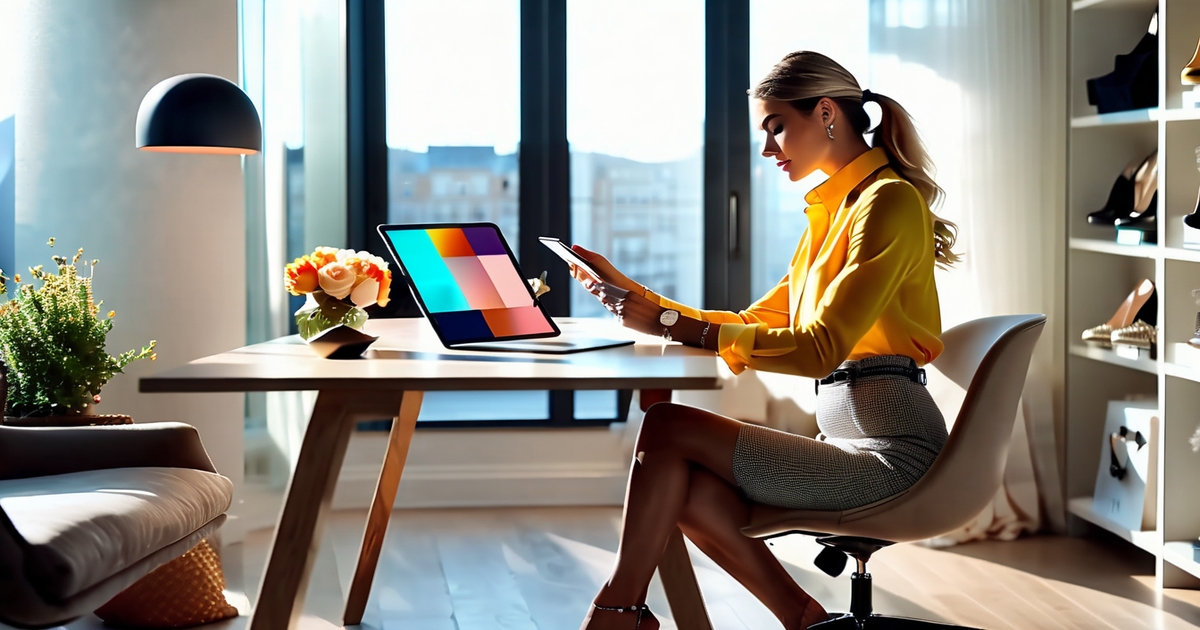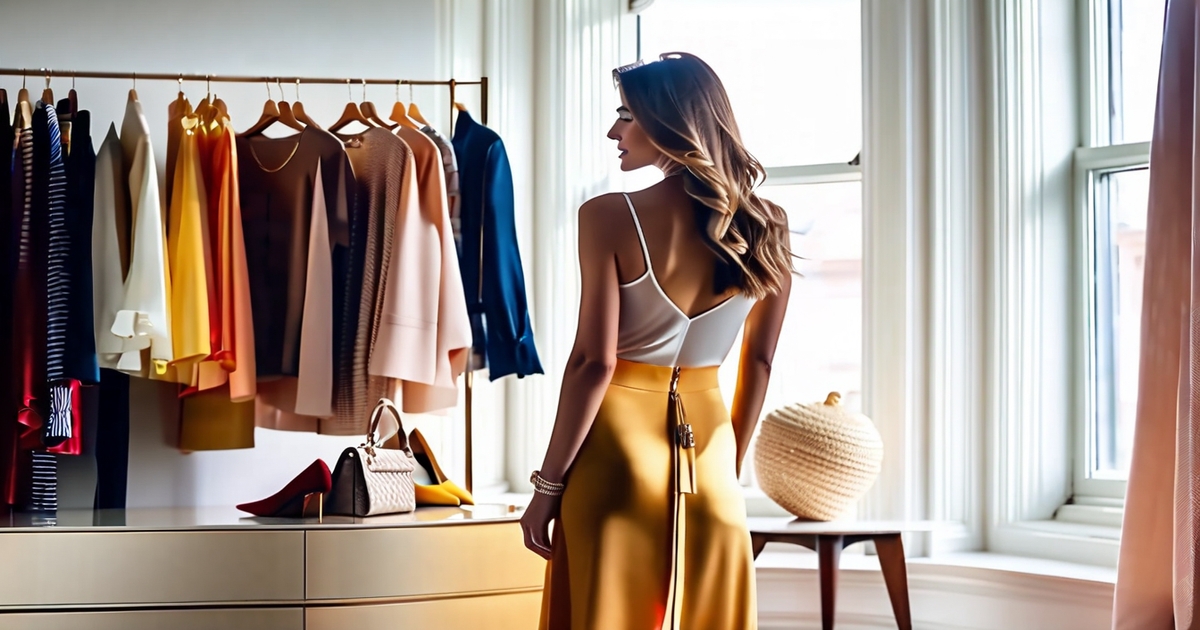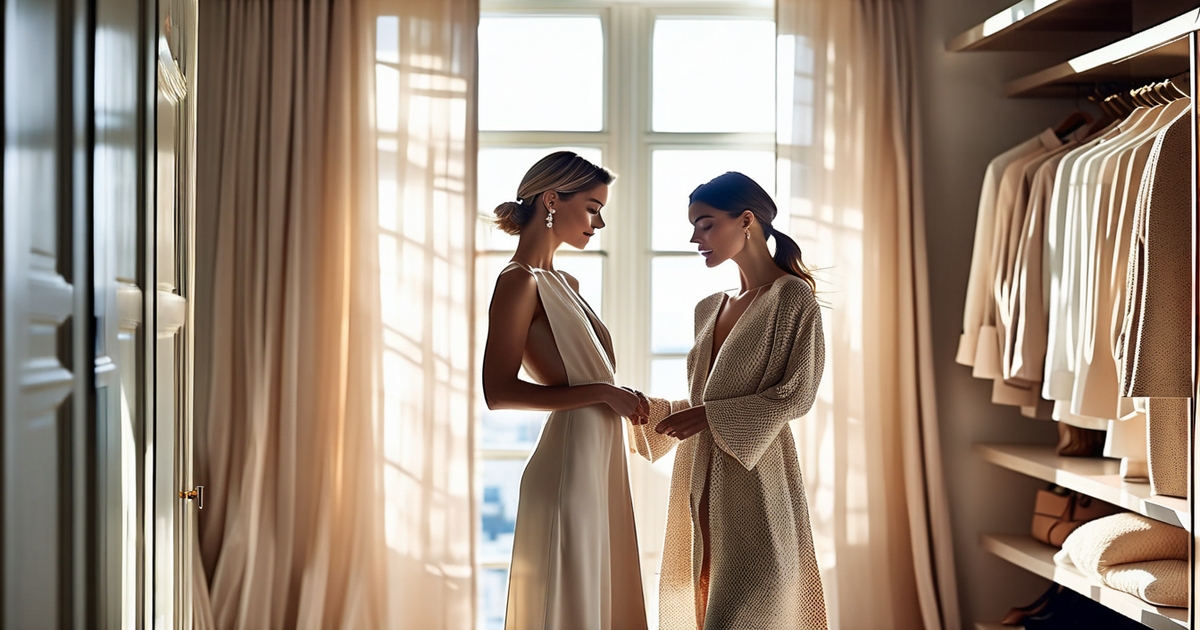What's My Personal Style? Take Our Free Fashion Style Quiz to Find Out!

Key Takeaways
- Begin with self-knowledge and ease – jot down when you feel most at home to identify its trustworthy rhythms. Snap outfit selfies or a style journal to record what really works day to day.
- Audit your wardrobe — sort into love, like, and never wear to find gaps and redundancies. Take out those that don't fit your current lifestyle and catalogue most-worns by style, color and fit.
- Develop a defined inspiration library with boards or clippings, then transform common motifs into a mood board. Let it inform your next shopping trips and daily ensembles to stay cohesive.
- Make a no list — to steer clear of awkward cuts, colors or trends that just don't get worn. Employ it as a shopping filter to curb impulse purchases and save both time and money.
- Complete an easy style profile and brief statement, then select five can't-live-without pieces that capture your style. Try style archetypes and mix components that fit your life and principles.
- Evolve purposely by augmenting classics staples with carefully chosen trends and modifying for contexts and climates. Establish mini goals, customize for fit, and document with photos to develop a signature look.
🎨 Take Your Color Analysis Quiz
Ready to discover your complete color palette? Take our comprehensive color analysis quiz to identify your seasonal type and get personalized color recommendations that perfectly complement your natural features.
Take Color Analysis Quiz →What’s my style is all about identifying patterns in what you wear, what you like, and feel in your clothes. To figure it out, pay attention to hues you gravitate to, sizes you rock most and soles that suit your everyday.
To drop more hints, look in your staple jackets, backpacks and small stuff like jewelry. For example, observe how each ensemble compositions for work, errands or nights.
Up next, an easy-to-follow plan to map it out.
📚 Recent Articles
How to find your personal style
Style grows when you observe what you wear, why you wear it and how it feels. It's about dressing your physical form in ways that feel honest, not following fads that create clutter. Use a style journal or quick outfit selfies to keep tabs on what ignites confidence.
Check in on notes every month, shopping intentions, and daily life forefront.
1. Look inward
Think about how you feel in key outfits: calm in a soft knit set, bold in a sharp blazer, free in roomy trousers. Identify feelings you crave more of—calm, drive, fun—and the swagger factor each ensemble provides you.
List traits you want to show: creativity, professionalism, warmth, or edge. Add three style icons and write what you admire: palette, cut, or attitude. This exposes design hints you can imitate without imitating the individual.
Remember colors, fabrics and textures that seem natural on skin and in light. Do simple color analysis to identify dominant and accent colors so shopping is quicker. Note best-dressed moments and look for repeats–perhaps clean lines, earth tones or relaxed fits.
Body type intel does assist, though it's complicated – retain what is flattering and has good movement.
2. Analyze wardrobe
Lubeck suggests sorting your closet into love, like, and never wear. Patterns show fast: maybe you favor wide-leg pants, soft cotton, and muted tones.
Make an easy table of most-worn pieces with style/color/fit footnotes. Example: straight jeans, mid-rise, dark wash; linen shirt, loose, white; black trainers, low profile. This is your map.
Take out pieces that battle your existence or attire. A quarterly review works — some folks, in fact, pull out 33 items for a season to see what they actually need.
See if your wardrobe fits your weeks, events and seasons. If you walk to work, boots that support matter more than fragile stilettos. If winters are soft, bypass bulk coats.
Numbered gap list:
- Everyday tops you actually reach for
- Bottoms that fit well and match three tops
- Layer pieces for work-to-dinner shifts
- Shoes for long walks and smart events
- Weather-ready outerwear and a compact umbrella
- Accent items in your key colors
- One standout piece for joy
3. Gather inspiration
Bookmark posts and looks you love, from around the world, not just one city. Screenshot/pin/clip, then annotate with one line per image about why it works.
Note repeats: color palettes, silhouettes, shoe shapes, bag scale. Construct a mood board from the victors and use this to define a precise shopping strategy.
4. Define your no's
Enumerate styles, colors and trends that are not for you or your day. Perhaps neon, scratchy wool, micro hemlines or starched collars. Mention styles or fabrics that never lay right on your frame.
Set rules: no buys that need "fixing," no duplicates, no shoes under 3 km comfort. Use the 'no' list as an impulse-buy filter.
Shoot for 80% good, useful basics, 20% personality items to keep things balanced.
5. Articulate your profile
Sum up your look in short phrases: "sporty minimal," "soft tailored," or "boho neat." Draft a style line: "Clean lines, low-key color, soft texture, easy movement.
Choose five must-haves that define your go-to look: straight dark jeans, crisp white shirt, light blazer, sleek sneakers, leather crossbody.
Share your profile with a friend or stylist for feedback and then tweak each season. Continue tracking outfits and mood — style develops, so be patient and update over time.
Explore style archetypes
Style archetypes provide us with a common vocabulary of decision, serving as a clothing style quiz that offers guidelines rather than laws. The table presents key traits upfront, allowing you to explore mixes that suit your unique style personality.
| Archetype | Key Shapes | Fabrics | Colors | Details | Vibe |
|---|---|---|---|---|---|
| Classic | Tailored, straight | Wool, cotton | Neutrals (navy, black, camel) | Minimal hardware | Polished, timeless |
| Bohemian | Flowy, loose | Linen, cotton, crochet | Earth tones, warm brights | Fringe, beads | Relaxed, artsy |
| Edgy | Sharp, fitted | Leather, denim | Dark base with vivid pops | Studs, zips, metal | Rebellious, bold |
| Romantic | Soft, draped | Lace, chiffon, silk | Pastels, florals | Ruffles, bows | Gentle, graceful |
| Contemporary | Clean, mixed | Stretch blends | Neutrals with accents | Sleek trims | Modern, trend-aware |
| Explorer | Loose + strong | Cotton, linen, denim | High-impact brights, earthy notes | Tribal motifs, bold graphics | Adventurous, boundary-pushing |
Classic
I'm talking blazers with square shoulders, straight-leg jeans, crisp shirts and loafers. Maintain clean lines. Ditch big logos and trendy cuts that age quickly.
Choose a tight color plan: navy, black, white, grey, camel. Stock up on fine knits, one trench, a leather belt and minimal watch. Every piece should play with three others.
The aim is for effortless, polished pieces for work, travel and events, without clamor.
Bohemian
Floaty skirts, billowy blouses and flared-leg pants in lightweight materials are the vibe. Prints can be paisley, block prints or abstract botanicals.
Layer long necklaces, stack bangles, throw on a brimmed hat or fringed bag for texture. Pull in vintage or handmade finds–like handwoven scarves or embroidered vests–for soul.
Prefer loose fits that flow on long days and hot weather.
Edgy
Begin with a leather jacket, dark wash denim and chunky boots. Coordinate a graphic tee with tailored pants.
Metallic accents, studs and barbed jewelry give it some bite. Stick with a dark base—black, charcoal, ink blue—alight with a zing of crimson or acid green.
The silhouette may be lean or boxy, but it needs to look intentional and powerful.
Romantic
Light fabrics—lace, chiffon, silk—with soft color or floral prints. Ruffles, bows and delicate chains bring a subtle sweetness.
Select dresses and skirts that swing with you. Vintage-esque cardigans, Mary Janes or cameo pieces suggest old-world elegance without stifling to costume-y.
Contemporary
Follow fads, but keep the silhouette smooth. Combine a structured blazer with a loose knit, or fitted shorts with a crisp button-down.
Employ a bold color or graphic print as a single accent—one statement per outfit. Choose pieces that shift from day to night: slip dress, tailored vest, smart sneakers, compact crossbody.
Change it up frequently so the appearance remains fresh.
Take a style personality test

A clothing style quiz helps you identify your unique style personality, discover what flatters your figure, and make informed shopping recommendations with confidence—no guesswork necessary! It's an easy way to explore aesthetics and discover what you truly appreciate in clothes, from coziness to construction.
Complete an online style quiz to receive personalized insights into your fashion preferences.
Choose a quiz from a reputable source that describes its process and displays a diverse spectrum of styles outside of fads. Good ones inquire about your everyday habits, budgets, and how you like clothes to feel, not just what looks 'cool'.
Expect questions that set scenes you know: a work day, a weekend trip, a dinner invite. You need a quiz that delivers more than a tag. Search for results with outfit examples, fabric notes and shopping tips. This keeps the insight relevant whether you shop new, vintage or thrift.
If you love the hunt—hours in used shops, sorting piles for a special piece—make sure the quiz leaves room for that!
Answer questions about your lifestyle, favorite colors, and ideal outfits to generate accurate results.
Consider your typical day-to-day life. Do you walk too much, need layers, or work somewhere with a dress code? Pick color combinations you really wear, not what you think you should.
If you gravitate towards navy, olive, black, and cream, say that. Name your go-to outfits: wide-leg pants and a crisp shirt, a knit dress and flat boots, cargo pants and a soft tee. Include notes on fit and fabric you love—linen that breathes, wool that endures, stretch that grooves.
If function motivates you, check comfort and pockets as high needs. If self-expression is your goal, consider bold prints, sculptural forms and statement shoes.
Review your quiz results to discover your dominant style personality and potential blends.
Read the overview, then explore the specifics. You can go 'Classic/Preppy' with clean lines, stripes, loafers and timeless cuts. Or 'Minimal', 'Romantic', 'Bohemian', 'Sporty', or a mix like 'Edgy-Classic'.
The mix is crucial. It tells you why your heart skips for a sharp blazer and graphic tee, or a sleek dress and chunky sandals. Results can show values: care for sustainability, need for comfort, or drive to stay on-trend.
This guides you in selecting what to invest in or set aside and which labels align with your values.
Use the test outcomes as a starting point for refining your wardrobe and shopping strategies.
Translate insights into action. Build a short list: core colors, key shapes, daily shoes, and one or two hero pieces. If Classic/Preppy clicks, shoot for a navy blazer, crisp shirt, straight jeans and leather loafers.
If you adore the thrift hunt, schedule time to score a well-seamed wool coat or silk shirt. If you value practicality, opt for air flow knits, solid soles and bags with genius pockets.
Set a rule for new buys: must match your color set, fit two outfits, and feel good for at least eight hours. Style is local and universal at once, your test provides a guide, not a limitation.
Style beyond the clothes

Style extends to how you wear your watch, your hair, and your cologne, as well as your skin care and how you enter a room. It's the combination of grooming, posture, voice, and little habits that define your personal style. A clothing style quiz can help you discover the aesthetics that resonate with you, adding grain to your presentation of yourself to the world.
It shifts with life: job, commute, climate, and hobbies. Others employ a fit-note, color-test, or even a clothing style quiz to figure out what 'naturally' works on them. Frameworks assist, like 60s, Punk, or bohemian styles, but your unique style personality is the key.
Tattoos, piercings and a signature scent can do as much work as a jacket. Style grows, some stages feel comfortable or boring and that’s okay. Hold on to what you love, trim what you don't, and release the rest.
Your life story
Consider these milestones—graduation, relocation, new position, loss or renewal—and what transformed in your wardrobe at every juncture. Maybe a long winter had you loving wool and layers. A relocation to a muggy coast might have helped you transition into linen and pale hues, reflecting your preferred aesthetic.
Work molds style more than we confess. A field engineer who hauls gear may prefer cargo pockets and grippy shoes, while a remote wordsmith could exist in knits and drop-crotch pants. Just throw on crisp frames to appear alert during Zoom meetings, showcasing your unique style personality.
The week dictates your wardrobe; your diary is a fashion chart. Narrate in vignettes. The scarf from a first solo trip. The blazer you wear to request a raise. The promise ring. It's these moments that make rules feel human and can inspire outfit ideas.
Record it. Take mirror shots every month, jot down 3 lines of what felt good, what you didn't. Identify patterns—favor straight hems, despise scratchy seams, obsessed with deep blues—then shop accordingly with personalized stylefile recommendations.
Your core values
Match choices to values you can name: comfort, ease of care, or polish. If you value longevity, choose strong fibers, fix frequently and track wears. When professionalism counts, stick to sharp lines and dark neutrals.
Brands and fabrics talk. Leather alternatives, organic cotton, traceable wool or preloved treasures can align your conscience with your price-point. Let clothes speak what you speak — hushed hues for concentration, audacious patterns for happiness.
Recheck each buy: does it fit your values list, your life, your plan?
Your cultural roots
Pay tribute to heritage with colors, motifs, cuts, or jewelry that wink at home, even in little ways. Printed scarf, handwoven belt, a old symbol ring can change a basic look.
Mix roots with the present. A kurta-style tunic over jeans, a kente-trim tote with sleek sneakers, a guayabera in crisp cotton. Keep the shape contemporary, let the embellishment do the story.
Clothes can compete with family lore. A print your grandma adored. A fabric from the commune fair. Pass it on when challenged, it’s what keeps the legend breathing.
Let your roots guide mood and shape: bohemian ease in drape and fringe, rock edge in black, studs, and sharp boots. Try, record what rings true, polish with time. Style develops by accumulations of these little truthful experiments.
How to evolve your style

Style evolves when you reflect on your lifestyle, preferences, and physique, and then experiment with minor modifications. Taking a clothing style quiz can help you identify your preferred aesthetic. Save outfit pictures, keep notes on what’s working, and edit your closet regularly to ensure only pieces that still earn their place remain.
Blending trends
Mix the trends into your existing style so your look remains you. Begin with one trend a season, say a dapper waistcoat, an eye-catching sneaker, or wide-leg trousers. Stir in new colors or a bold silhouette, then measure comfort and wear. Vintage or secondhand steals inject style-savvy edge, reduce waste and frequently sport better fabric.
Keep a record: a simple grid of week-by-week photos shows which shifts stick.
- Follow the trends that align with your style persona. Bypass the others.
- Steady a trend with two classics.
- Use one focal point per outfit to avoid clutter.
- Mix patterns by keeping one small-scale and quiet.
- Fit first, tailor of a trend leans long or loose.
Balance comes from classics that ground the outfit: a clean white shirt, dark denim, a simple loafer. Seasonal swaps—such as a saturated scarf or structured knit—freshen the base without noise. Skip the closet reset, add with purpose.
Adapting contexts
Apparel plays best when it fits the scene. Map your week and note needs: desk days, light travel, gym, dinner out. Build go-to formulas that cut choices, such as: blazer + knit tee + tapered trousers for work, midi dress + flat boots for social, neat joggers + overshirt for errands.
Spread out looks the evening prior, or plan a mini capsule per season. Climate matters—layer in light, breathable fabrics for heat and humidity, and incorporate structured outerwear in colder months.
Know the dress codes, but keep one thing you love—whether it's a color you grab or your favorite watch. Choose versatile pieces that shift roles: a slip skirt that works with sneakers by day and heels at night, a chore jacket that moves from weekend to casual office.
Overcoming challenges
Limits force you to be clever. If budgets are lean, establish a monthly limit and shop thrift before new; learn vital search words and fabric indicators. For fit, tailor hems, waist and sleeve length–small adjustments alter the entire silhouette.
Cramped for room! Apply a one-in-one out rule and audit monthly. If you haven't worn it in 90 days and it's not formal or seasonal, donate or repurpose.
Try new ideas in small steps: rent for events, test silhouettes at thrift prices, and log results in a style diary. Eventually, patterns reveal to you what makes you look and feel your best.
Building your signature look

A signature look is a consistent strand in your personal style narrative. It demonstrates self-knowledge, signals ease, and helps you dress with less guesswork while being true to your clothing style.
Define the key elements that make your style instantly recognizable, such as a color palette or accessory.
Begin with 3-5 base colors that compliment your skin tone and compliment each other – navy, black, charcoal, cream or olive. Throw in two accent shades for lift, such as rust or cobalt.
Pick one or two identifiers you repeat often: a sleek watch, hoop earrings, soft scarves, or white low-top sneakers. These cues identify you even as the outfit changes. The aim is a reliable look, not a uniform.
Most of us mix 2-3 style types—perhaps classic + sporty, or minimal with a touch of boho—so pick components that match your blend. Outrageous or understated, edgy or casual, the spectrum is yours to define.
Curate a capsule wardrobe of core pieces that reflect your personal brand.
Develop a mini-wardrobe of things that drag heavy across seasons. Think well-cut trousers, straight jeans, a crisp shirt, a knit polo, a soft blazer and outerwear appropriate for your climate, like a midweight coat or a trench.
Shoes set tone: loafers for polish, clean sneakers for ease, ankle boots for edge. Apply the one-year rule to edit — if you haven't worn it in 12 months, donate or repurpose.
Maintain accessories that rotate by season—woven belt or straw bag in warm weather, leather belt or wool cap in the cold—to keep looks fresh without a complete overhaul. Each item should go with 3 others.
Experiment with outfit formulas until you find combinations that consistently work for you.
Notice what you instinctively grab on hectic days. Make those successes into repeatable recipes. Examples:
- Tailored blazer + tee + dark jeans + loafers
- Knit dress + belt + ankle boots
- Wide-leg trousers + fine-gauge sweater + sleek sneakers
- Linen shirt + straight chinos + leather sandals
Try on each item — check fit, length and fabric weight — in front of a well-lit mirror. Small tweaks—cropped hem, slimmer sleeve, softer shoulder—can lock in the look that suits your body and life.
The goal is a consistent style, not the identical look on rotation.
Commit to intentional shopping and styling choices that reinforce your signature aesthetic.
Shop to complete, not to compete. Have a short list in mind before you shop, and score things by fit, feel and connection to your palette.
Select items that resonate with your selected style types so the entire closet is cohesive. Style with purpose: repeat your identifiers, keep your palette tight, and vary accents with season or event.
This consistent way of doing things keeps you dapper, comfortable, and undeniably yourself.
Conclusion
Style grows with you. Preferences change. Life goes on. A transparent lens helps slice the clutter. Your notes, mood boards, and test pics provide evidence, not speculation. Little moves pile up. Snugger fit. A more elegant thread. A complexion-lifting color. You notice the difference in the mirror and in your day.
Imagine a well fitted black tee, straight jeans, white low-tops and a light jacket. Switch out the jacket for a blazer to work. Swap the sneakers for boots at night. Same foundation. New feel. Easy.
Save what is applaudable. Repair what's broken. Budget by month, say 50–100 EUR, and buys by season. Have a question or a victory to report? Leave a comment and carry the conversation.
Frequently Asked Questions
How do I figure out my personal style fast?
Begin with what you're already wearing more, focusing on your preferred aesthetic. Memorize colors, fits, and fabrics you love, and consider taking a clothing style quiz to identify your unique style personality. Save 10 outfits you'd joyfully repeat and find common themes to construct around your best bits.
What are style archetypes, and why do they help?
Style archetypes, such as Classic, Minimal, Romantic, and Edgy, serve as defined starting points in a clothing style quiz. They can guide your shopping, styling, and closet editing without overwhelm.
Are style personality tests accurate?
They're useful, not ideal. Take the clothing style quiz results as guidance, not law. Compare results to your lifestyle, body comfort, and budget for personalized style recommendations.
How is style more than just clothes?
Style encompasses everything from your choice of clothing and accessories to how you present yourself. Engaging in a clothing style quiz can help refine your personal style, ensuring a streamlined impression.
How can I evolve my style without starting over?
Save your top staples and refresh your clothing style with one trend at a time—shoes, jackets, or colors. Tailor key pieces to reflect your unique style personality.
What is a signature look, and how do I build it?
A signature look is a repeatable outfit formula that can be discovered through a clothing style quiz. Pick a foundation (say, tailored trousers + crisp shirt), a color story, and one signature piece—think white sneakers or statement earrings. Wear it frequently for that ideal outfit!
How do I budget for a style refresh?
Put a cap on monthly spending and prioritize high-impact items like shoes, outerwear, and bags. Consider taking a clothing style quiz to identify your ideal outfit preferences. Purchase fewer, but superior items, and track cost per wear to maximize value with secondhand and tailored options.